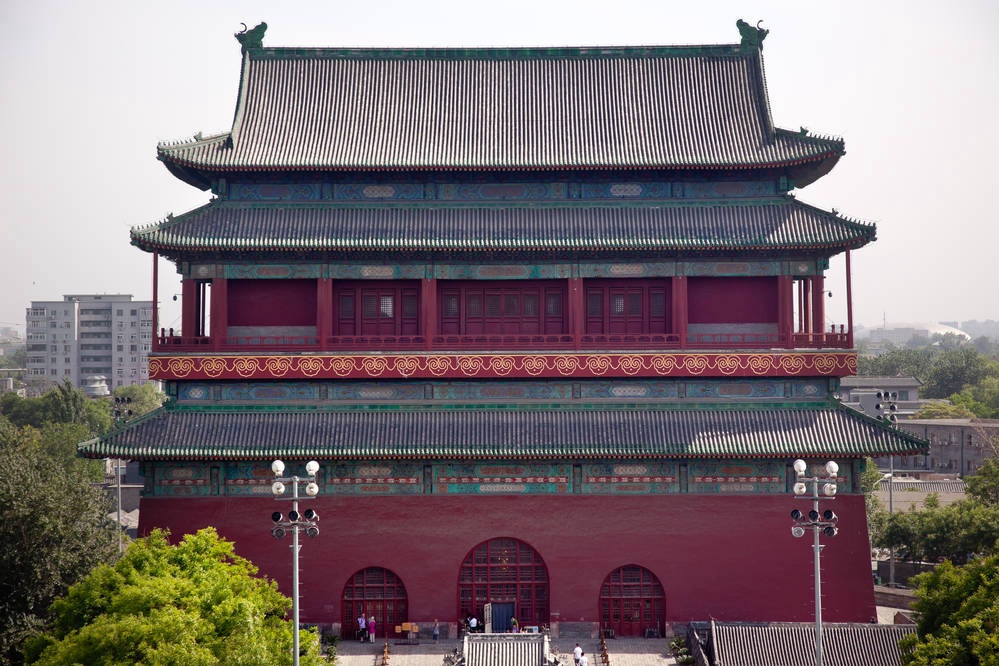The Central Axis is the best preserved core area of the old city of Beijing. Starting from Yongdingmen Gate in the south to the Bell Tower in the north, the axis stretches over 7.8 km and passes through Qianmen (Zhengyangmen), Tian'anmen Square, the Forbidden City, the Jingshan Hill, Di’anmen Gate, the Drum Tower and the Bell Tower.
Besides the renowned spots such as Tian’anmen Square and the Forbidden City, you may try this route to explore the “royal line” on foot. It may be a laborious process but a truly worth experience.
Bell and Drum Towers - Yandaixiejie - Yinding Bridge - Houhai - Di’anmen

The Bell and Drum towers are groups of ancient buildings on the northern end of the south-north central axis of Beijing. When it comes to the history of the city’s bell and drum towers, they are the largest.. Nowadays, the Bell and Drum towers, also the witnesses of nearly one hundred years of Chinese history, are two of the landmarks of Beijing.
Yandaixie Street

Yandaixie Street, literally meaning "Skewed Tobacco Pouch Street", starts from Di'anmen Avenue in the east and ends at Shichahai Lake in the west, stretching 300 meters long. It's one of the oldest streets in the city where some streets date back to the Yuan Dynasty.
The street originally got its name due to its shape, which resembles a huge tobacco pouch. During the Qing Dynasty (1644-1911), many tobacco stores opened there. Today, visitors wandering along the street still can find many stores selling tobacco pouches, antiques and all kinds of souvenirs.
Yinding Bridge
Yinding Bridge (Silver Ingot Bridge) The Yinding Bridge spans across the waterway between Qianhai and Houhai of Shichahai, Xicheng District. Facing to the south, the arch stone bridge bears resemblance, in its shape, to an ancient Chinese silver ingot, hence the name Yinding Bridge. In the past, one could enjoy the beauty of the West Mountain while standing on the bridge, so the theme of the scene was formerly known as "mountain viewing from the silver ingot". The original bridge was demolished for reconstruction in 1984 with the old name re-adopted.
Shichahai
Shichahai consists of three connected lakes, Qianhai, Houhai and Xihai , which were historically called the Housanhai (literally three rear lakes). They constitute the six-lake system together with Qiansanhai (literally three front lakes), which are Nanhai, Zhonghai and Beihai, in the inner part of Beijing. With a water area of 336,000 square meters, it is an area that can best represent the history and culture of the city.
Di’anmen
Di'anmen was the northern gate of the Imperial City and was first built in the Yongle period (1403-1424) of the Ming dynasty. It corresponds to Tian’anmen Square, the much more famed southern gate of the Imperial City, meaning the peace and good weather of the nation. The gate is located north of Jingshan Park and south of the Drum Tower.



